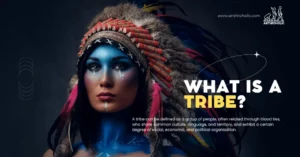AI Answer Evaluation Platform Live Now. Try Free Answer Evaluation Now
Endogamy
Endogamy, also known as ‘in-marriage’, is a type of marriage custom in which an individual marries another individual from the same ethnic, cultural, social, religious,tribal groups and sometimes even in the same family. The word endogamy relates back to the Greek origin wherein the term ‘endo’ means within and ‘gamy’ means marriage or union. Endogamy is a restrictive form of customary practice that came into existence to maintain the social strata and uniqueness of a group by our forefathers. This kind of limitation leads to the formation of smaller gene pools and passing on of a defective gene from one generation to another.

In most of the cases since earlier times till now, the practice of endogamy has been the decision of the eldest male member of the family or the leader of the tribe but it could also be caused by conscious decision of the individuals involved. It has also been a result of geographical isolation and cultural pressure. The idea of endogamy reflects the motive of maintaining the distinctive cultural practices of a particular group and to secure their inclusivity. It is considered that the ones who are following the endogamous form of marriage are respecting the old age tradition of their group, that was meant to keep cultural, ethnic and health related practices contained in that group. Endogamy is also associated with aristocracy and social classes.
This kind of endogamous marriage is practised in many parts of the world even today. For example in Syrian Christans , Saudi arabians, Toda, Mundas and Bhil tribes of India, Rajputs and Brahmins of Indian society, Muslims of Pakistan etc.
Types of Endogamous Marriage
There are mainly the following types of endogamous marriage practices that possess societal acceptance and define the boundaries of a group. These types of endogamous marriages encourage group unity and control. It also results in accumulation of wealth inside a family and maintenance of limited access to property and position in a society. These are:
1. Caste Endogamy
The solemnization of marriage within the caste ( a social class distinguished on the basis of occupational and economic status) is known as the caste endogamy. Such an endogamous marriage results in maintaining a pure bloodline and resource exchange within the same caste. European societies used to practise this for maintaining social class, Indian societies like Brahmins and Kshatriyas prefer to marry within their own caste. Even Baniyas and Shudras who are considered to be the lower socio economic group of people than the Brahmins and Kshatriyas prefer to marry in their own castes. Therefore it is just not restricted to the relatively economically superior group and upper caste of people as considered by the society.
2. Class Endogamy
The solemnization of marriage within the same class (based on economic and social conditions) is known as class endogamy. The class system is dynamic in nature and solely depends upon the gains of an individual that he/she makes with respect to economic and social achievements. The class can change so does a person’s preference of marrying someone equal to their current class can. Although, the class endogamy also depends upon other preferences such as religion, caste, occupation etc.
3. Tribal Endogamy
The solemnization of marriage within the same tribe ( a social group sharing the same language, customs, beliefs, tradition, aspirations and history) is known as tribal endogamy. The tribe consists of different clans. Therefore two individuals marrying each other can belong to two different clans but must belong to the same tribe. For eg – The Toda tribes of the Nilgiris follow the tribal endogamy marriage.
4. Lineage Endogamy
The solemnization of marriage within the same lineage (people of the same bloodline or family) is known as lineage endogamy. Such an endogamous form of marriage is practised for maintaining family wealth and females’s inheritance within the family. It is conducted through parallel cousin marriage i.e from the paternal side. Pastoral communities, some middle eastern communities and even many islamic communities follow this kind of marriage.
5. Village Endogamy
The solemnization of marriage within the same or specific village and territory is known as village endogamy. Such an endogamous marriage is performed to maintain the geographical boundaries or to keep direct face to face contact after marriage. In the Yanomamo tribe of Amazonia the village endogamy is practised. They exchange women to marry their cousins from a bilateral cross cousin rule and form settlements using the local lineage system.
Why are Endogamous Marriages practised?
The motivation behind the endogamous types of marriages is basically the idea of following the traditional practices, this could be followed either completely out of own moral obligation or cultural and societal pressure. The belief that the exogamous type of marriage leads to the mixture of cultural traits that does not resemble either of the parties involved and thus results in dishonouring of the social groups is one of the reasons people still follow Endogamy.
Endogamy is also practised because it is a form of segregation and restriction of resources such as property, wealth etc to a particular group, keeping and encouraging the unity of a group, acquiring of wealth and control over bloodline.
Many of the social groups following the endogamous type of marriage even have punitive measures for people who deviate from this practice. The honour killings in India and Pakistan are a classic example of such drastic actions in the name of punishment.
Cons of Endogamy
Endogamy leads to Inbreeding depression because of the continuous inbreeding practice. Inbreeding is a phenomenon in which genetically related individuals are mated together. This type of mating between closely related organisms leads to homozygosity which means the offspring might have carried the genes of the ancestors that are recessive and detrimental in nature. This is known as inbreeding depression. The limited gene pool also leads to genetic disorders that are incurable and deadly in nature. The reduction of genetic variation which is also known as ‘ founder effect’ occurs. In the longer run this type of mating produces unfit individuals and sometimes it even leads to the extinction of a species.
Although, nowadays in contemporary times looking at the deleterious effects of endogamy, societies have started following a flexible form of endogamy with less restrictions.




